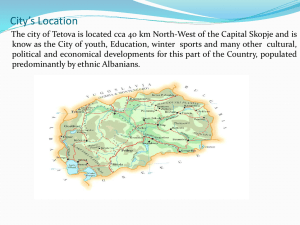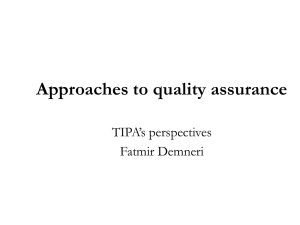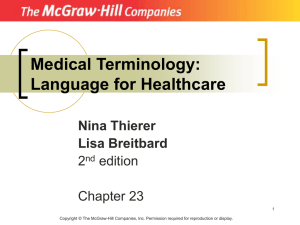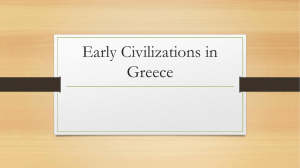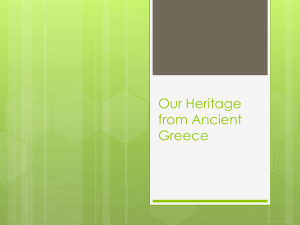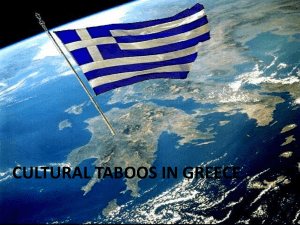Albanian complementary schools in Greece
advertisement
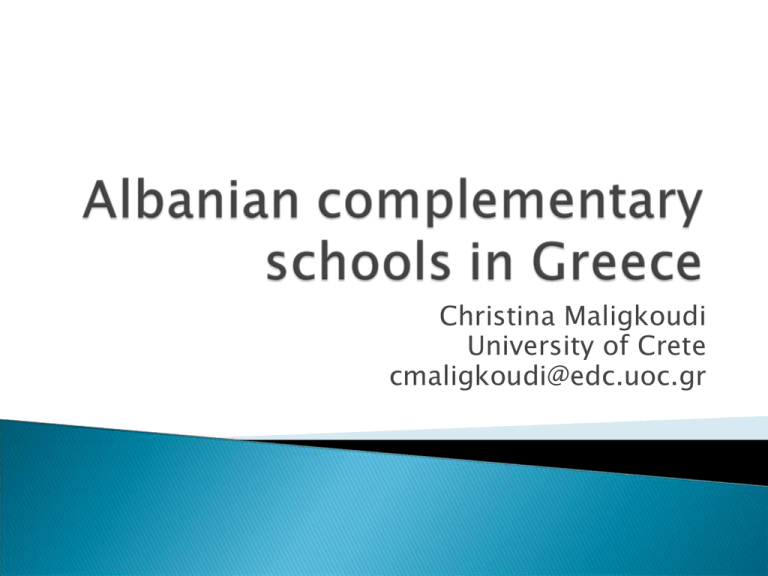
Christina Maligkoudi University of Crete cmaligkoudi@edc.uoc.gr In the decade of ‘90s a large population of Albanians came to Greece due to the collapse of the communist regime in Albania. 2009: 577.000 Albanian immigrants in Greece (63,7% of the total amount of foreigners) Number of Albanian pupils in Greek schools: 69.880 (2004) One of the basic aims of my PhD research was to investigate if and how Albanian parents maintain and transmit their language to the next generation. During the research it came out that a frequent family practice is children’s attendance of Albanian complementary schools. Research on some of these “schools” was attempted on the basis of three variables: a)schools’ structure, b) aims of the schools, c) attitudes of parents Despite the large number of immigrants pupils, there is no provision for mother-tongue teaching at schools. The only exception involves children of the Muslim minority living in Western Thrace (bilingual program for elementary school). Foreign language teaching involves English and on of the following: French, German, Italian. Only in the context of two programs for Intercultural Education (that were funded 75% by the European Union) were Albanian and Russian taught in some schools on a pilot basis. Period: 2006-2007 Semi-structured interviews with organizers teachers and parents at 6 Albanian complementary schools Also, collection of additional data (statutes, teaching material, photos etc.) The interviews were conducted in Greek and in Albanian Teachers teach language at schools voluntarily. Most of them have studied Albanian philology or have some background on educational studies. Lessons take place at weekends. Information about the community’s actions or about lessons is provided in Albanian local newspapers or through announcements in public or private services that immigrants visit. In the majority of the schools, there are two levels of learners: beginners and intermediate level. Teaching material: the same that is used in elementary schools in Albania. Absence of a concrete syllabus. Basic aim: the development of literacy in Albanian. Parallel teaching of Albania’s history, geography and cultural elements. Limited number of Albanian students. Most of the students have immigrated to Greece in the end of 1990s-beginning of 2000. Age of students: 5-17. Most of the students had a limited knowledge of Albanian. In almost all contexts, they used Greek and only in few cases code-switching was noticed (without further examination). Limited support form Albanian institutions. More support from Greek local institutions, especially in small towns (free access of locales) Schools are locates in the city centre (parents have a rather easy access) Albanian communities organize other activities as well, apart from teaching Albanian language (theater plays, celebration of national holidays, libraries with Albanian books etc.) Transmission and maintenance of the Albanian language and culture to the younger generations of immigrants (“We want them to learn to read, to write and to speak Albanian”). Maintenance of links with relatives in Albania (“We want our children to communicate with their grandparents in Albania”). Development and reinforcement of Albanian ethnic identity among Albanian students (“We want our children to learn our language and not forget their roots”). Family practices for mother-tongue maintenance are limited and parents seek support from organized initiatives (“There is no time, although our women want to teach them, they do not have time”). An incentive for parents to use their mothertongue at home (“This was the aim of the school, to motivate parents to speak Albanian at home”). Why they “send” their children to complementary schools: To develop literacy skills in Albanian (“We only speak Albanian at home. But she has to learn how to write”). The notion of “complementary school” makes parents feel that their children are going to learn “proper” Albanian (“In schools all things are more serious”). To develop Albanian ethnic identity (“To keep her origin. Because it is a shame for us…an Albanian child not to speak Albanian”). To communicate with relatives, especially with grandparents, in Albania. Possibility of repatriation (“We don’t know what will happen tomorrow. If we leave to Albania, how can he survive there?”). Enrichment of general cognitive skills (“The more languages you know, the smartest you are”). Parents think they will also begin to speak more Albanian at home. However… In comparison with the number of Albanian pupils that attend today Greek schools, only a small percent attend complementary schools. Interviews with 37 Albanian parents, who do not “send” their children to these complementary schools, showed that: Most of them, despite their positive attitude towards complementary schooling, hesitate to implement this practice, in order to transmit Albanian to their children. Lack of time (“On Saturday I work. If my older child goes to the Albanian school, who is going to take after my younger one? We do not have any help”). First priority for them is their children to learn Greek prior to Albanian, in order to avoid “confusion” (“She has to learn first Greek well, we live in Greece. Afterwards she can learn Albanian. Now she is going to mix them”). Four families were totally negative towards Albanian complementary schools: They feel that they do not need any external help for maintaining their language (“We are not interested in these schools, we can manage on our own to teach them Albanian”). They do not want to keep Albanian language (“I want my children to learn only Greek. They are going to Greek schools, they are going to study in Greece, they are to work here. So we don’t need Albanian lessons”). A more thorough insight into the school process. Students’ attitudes towards complementary schooling. Results of complementary schools (are the aims of the schools finally fulfilled?) Research on complementary schools from other immigrants’ communities.

